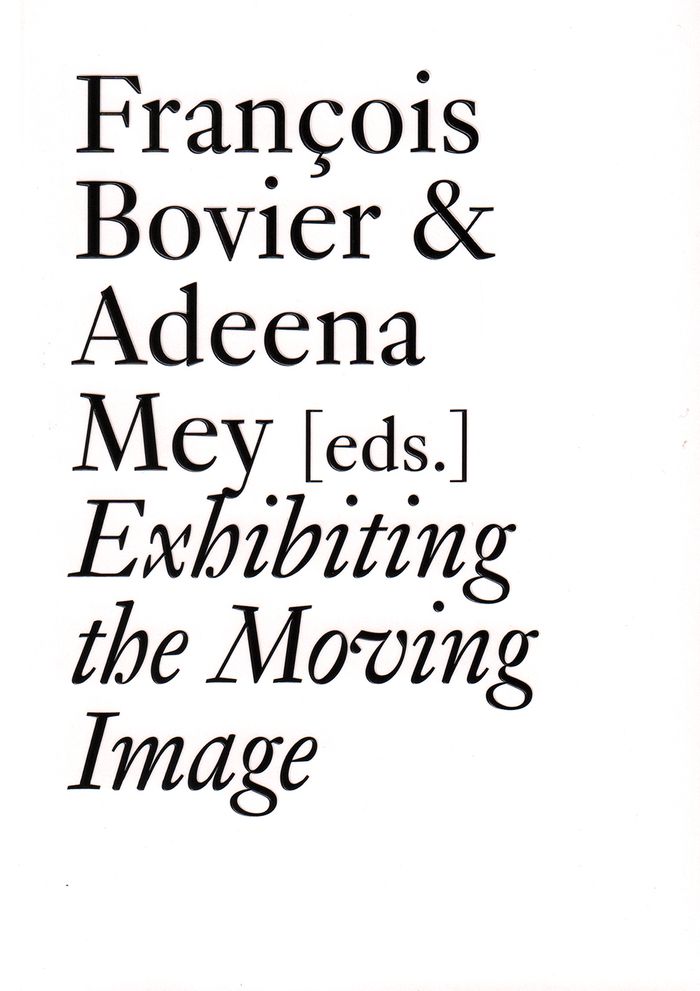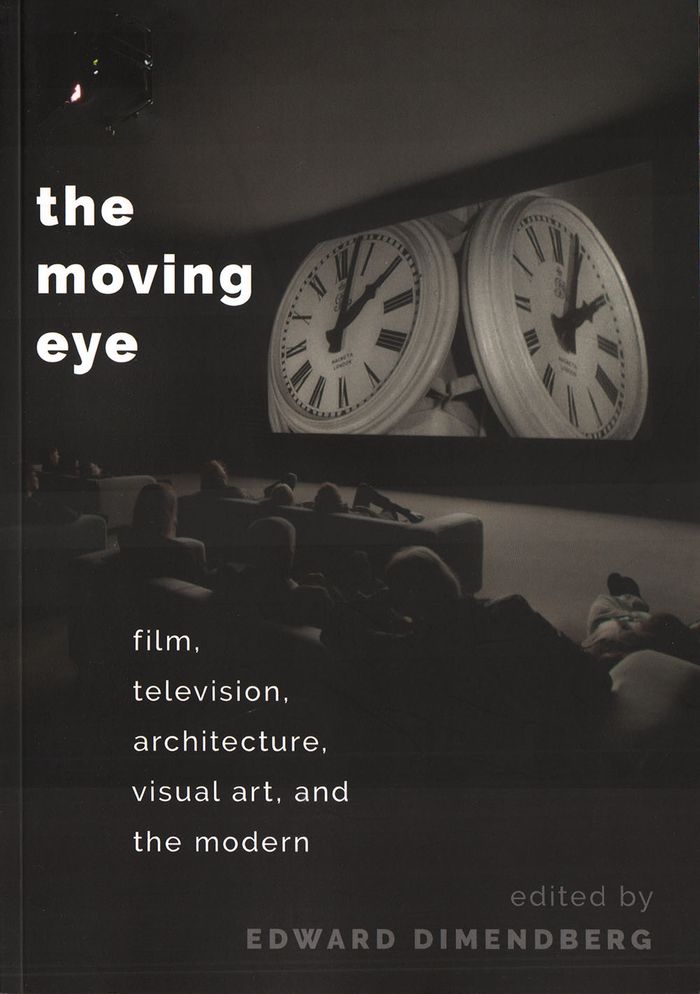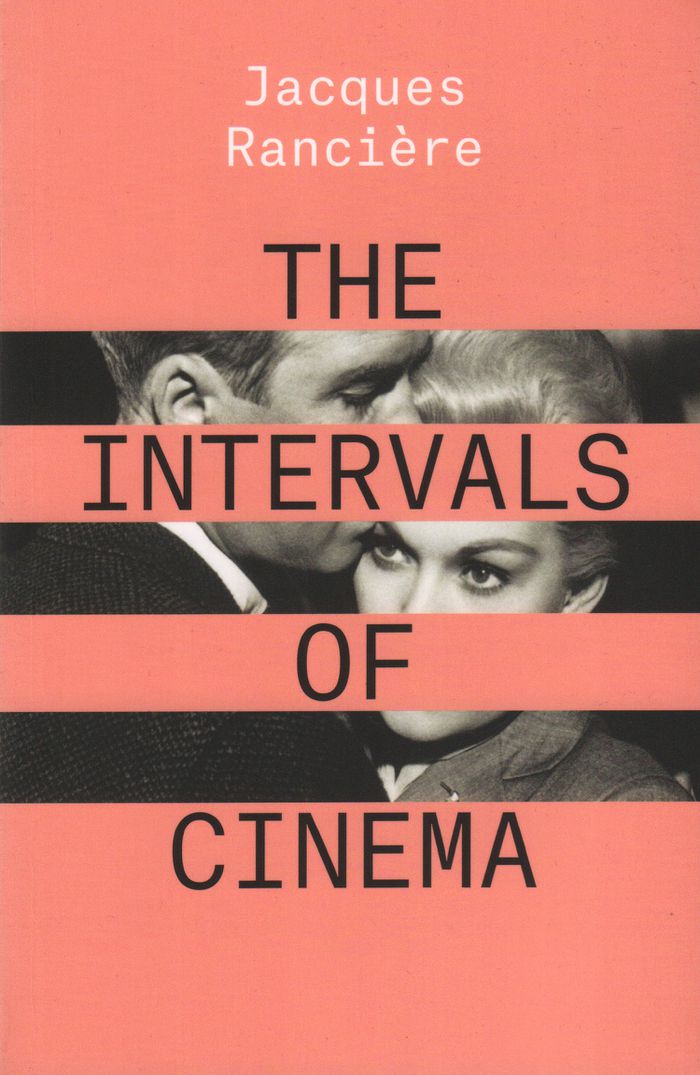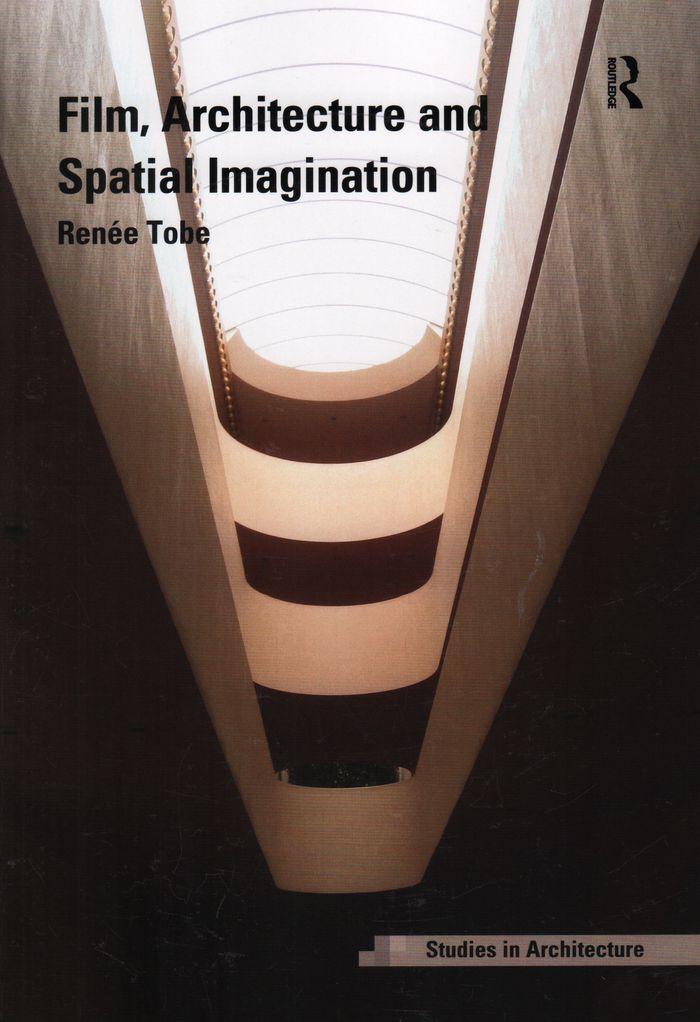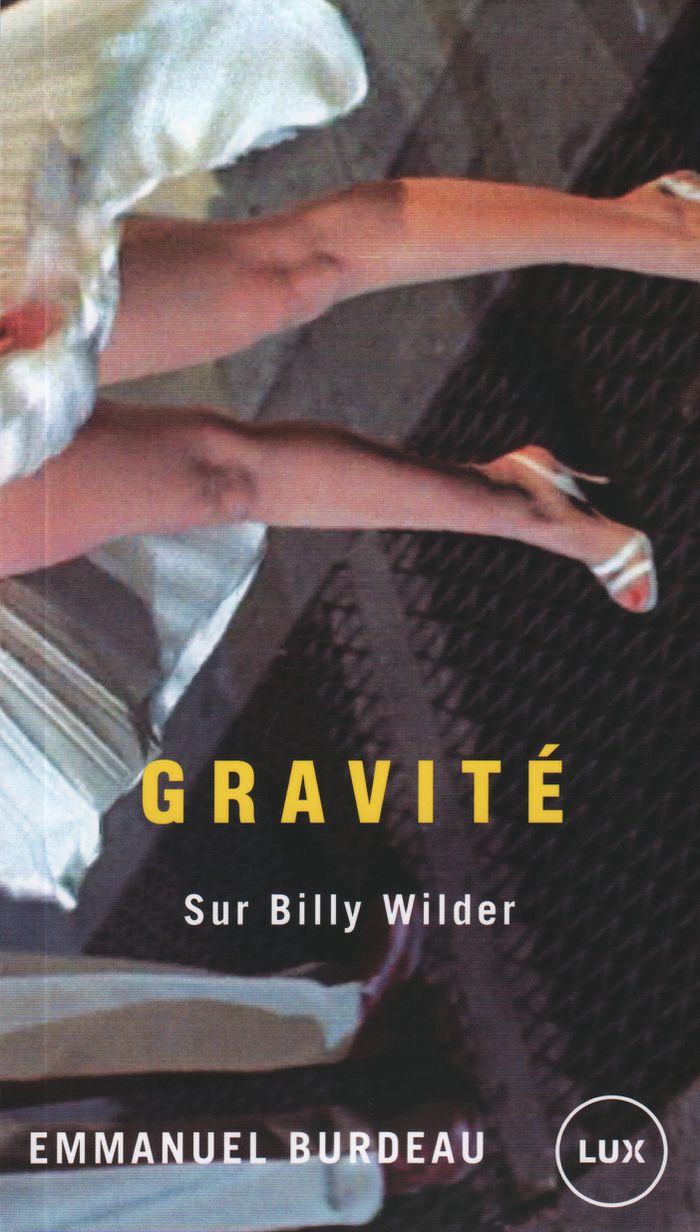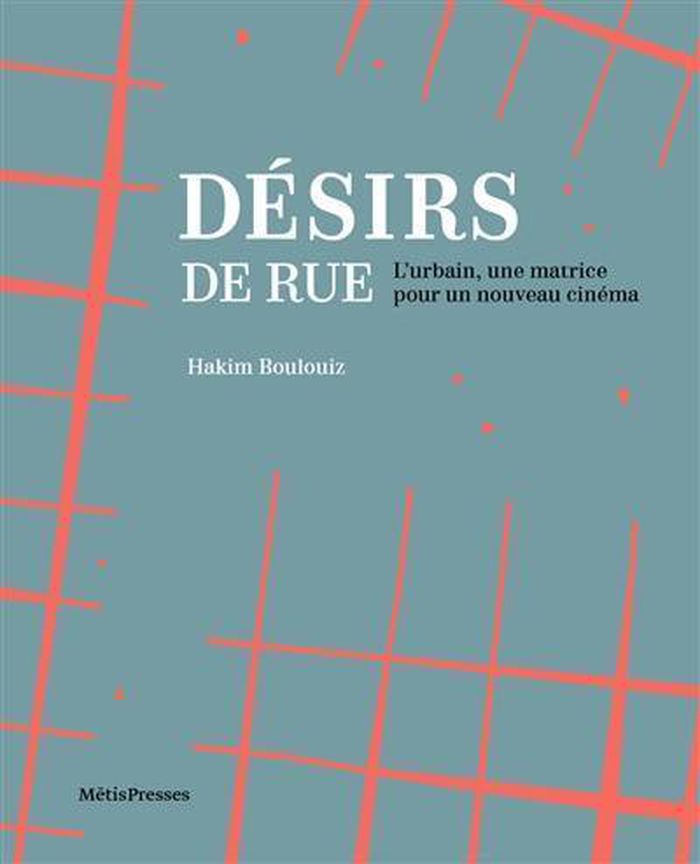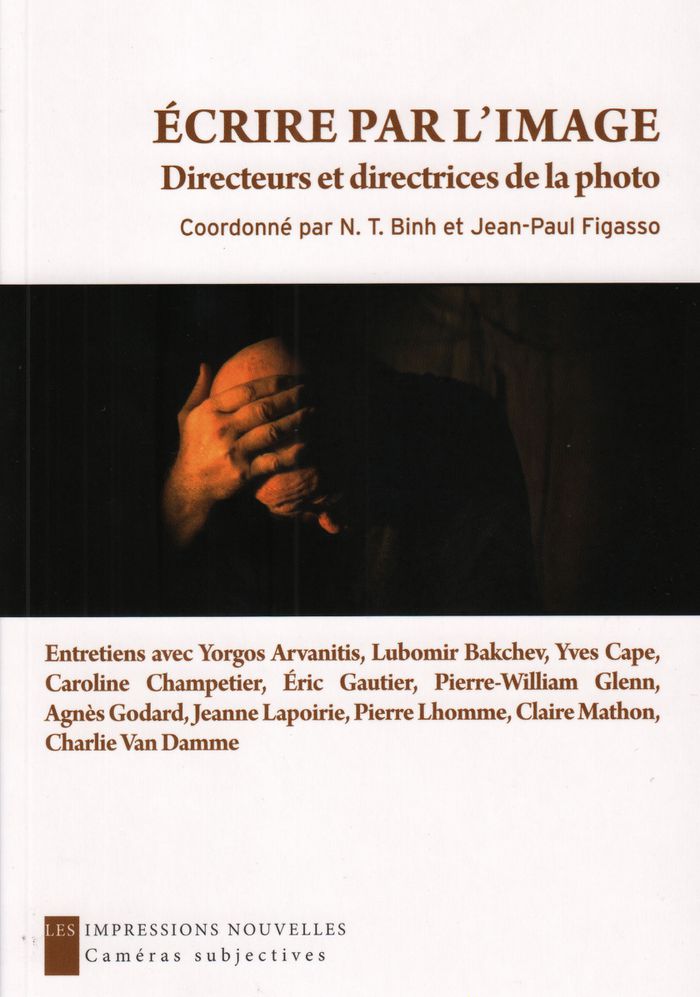$64.95
(available in store)
Summary:
The publication is the first comprehensive study of Baruchello’s relationship with the moving image from the sixties on. Produced on the occasion of the exhibition "Gianfranco Baruchello: Cold Cinema". "Film, video e opere 1960-1999", held at La Triennale di Milano in 2014 and 2015, the book opens with a densely packed montage of Baruchello’s own notes, images, and(...)
April 2018
Gianfranco Baruchello : archive of moving images, 1960-2016
Actions:
Price:
$64.95
(available in store)
Summary:
The publication is the first comprehensive study of Baruchello’s relationship with the moving image from the sixties on. Produced on the occasion of the exhibition "Gianfranco Baruchello: Cold Cinema". "Film, video e opere 1960-1999", held at La Triennale di Milano in 2014 and 2015, the book opens with a densely packed montage of Baruchello’s own notes, images, and documents, presented by means of a medium dear to the artist, photocopies. An essay by Alessandro Rabottini takes us through the rooms of the exhibition at La Triennale di Milano, while a conversation between Baruchello and Massimiliano Gioni highlights some key aspects of his ideas about cinema. Carla Subrizi’s text winds its way through his entire production of films and videos, whereas an essay by Philippe-Alain Michaud examines some of the historical roots of Verifica incerta (1964-65).
Exhibiting the moving image
$39.95
(available to order)
Summary:
Since the 1990s, a "cinematographic turn" has taken place in contemporary art, paralleled by the emergence of a "cinema of exhibition." This collection of new essays investigates the relationships between the "white cube" and the "black box," focusing mainly on the 1970s, a decade in which film practices and moving images were integrated into museums and art spaces. The(...)
March 2016
Exhibiting the moving image
Actions:
Price:
$39.95
(available to order)
Summary:
Since the 1990s, a "cinematographic turn" has taken place in contemporary art, paralleled by the emergence of a "cinema of exhibition." This collection of new essays investigates the relationships between the "white cube" and the "black box," focusing mainly on the 1970s, a decade in which film practices and moving images were integrated into museums and art spaces. The authors analyze multiple modalities of presenting the moving image through historical case studies: the anatomy of video art, expanded cinema, artists’ films and installations, and the moving image in the public sphere. Exploring examples from the 1930s to the present, these contributions address commercial, spectacular or advertising forms of moving images, artists’ performative practices, installations in large museums, exhibitions devoted to projections and festivals of experimental films.
Sur le film
$75.95
(available in store)
Summary:
Ce livre propose une lecture rétrospective, non linéaire et décentrée de l’histoire des images en mouvement : il s’appuie sur une analyse de la pensée filmique telle qu’elle se déploie, indépendamment de ses applications techniques, dans l’histoire des représentations, et constitue un repérage de la manière dont les propriétés du film, disjointes de l’appareil qui(...)
Sur le film
Actions:
Price:
$75.95
(available in store)
Summary:
Ce livre propose une lecture rétrospective, non linéaire et décentrée de l’histoire des images en mouvement : il s’appuie sur une analyse de la pensée filmique telle qu’elle se déploie, indépendamment de ses applications techniques, dans l’histoire des représentations, et constitue un repérage de la manière dont les propriétés du film, disjointes de l’appareil qui conditionne le spectacle cinématographique, agissent dans les différents champs des pratiques artistiques.
Architecture and Film, Set Design
$43.95
(available in store)
Summary:
Once the province of film and media scholars, today the moving image is of broad concern to historians of art and architecture and designers of everything from websites to cities. As museums and galleries devote increasing space to video installations which no longer presuppose a fixed viewer, urban space becomes envisioned and planned through "fly throughs," and(...)
The moving eye: film, television, architecture, visual art, and the modern
Actions:
Price:
$43.95
(available in store)
Summary:
Once the province of film and media scholars, today the moving image is of broad concern to historians of art and architecture and designers of everything from websites to cities. As museums and galleries devote increasing space to video installations which no longer presuppose a fixed viewer, urban space becomes envisioned and planned through "fly throughs," and technologies such as GPS add data to the experience of travel, moving images have captured the attention of geographers and scholars across the humanities and social sciences. Their practice of "mobility studies" is remaking how we understand a contemporary world in relentless motion. Media theorist and historian Anne Friedberg (1952-2009) was among the first practitioners of visual studies to theorize the experience of vision in motion. Her books have become key points of reference in the discussion of the windows that frame images and the viewers in motion who perceive them. Although widely influential beyond her own discipline, Friedberg's work has never been the subject of an extended study. "The Moving Eye" gathers together essays by renowned thinkers in media studies, art history, architecture, and museum studies to consider the rich implications of her work for understanding film and video, new media, visual art, architecture, exhibition design, urban space, and virtual reality.
Architecture and Film, Set Design
The intervals of cinema
$25.95
(available to order)
Summary:
The cinema, like language, can be said to exist as a system of differences. In his latest book, the acclaimed philosopher Jacques Rancière relates cinema to literature and theatre. With literature, he argues, cinema takes its narrative conventions, while at the same time effacing its images and its philosophy; and it rejects theatre, while also fulfilling theatre’s dream.(...)
September 2019
The intervals of cinema
Actions:
Price:
$25.95
(available to order)
Summary:
The cinema, like language, can be said to exist as a system of differences. In his latest book, the acclaimed philosopher Jacques Rancière relates cinema to literature and theatre. With literature, he argues, cinema takes its narrative conventions, while at the same time effacing its images and its philosophy; and it rejects theatre, while also fulfilling theatre’s dream. Built on these contradictions, the cinema is the real, material space in which one feels moved by the spectacle of shadows. Thus for Rancière, the cinema is the always disappointed dream of a language of images.
$71.95
(available to order)
Summary:
Films use architecture as visual shorthand to tell viewers everything they need to know about the characters in a short amount of time. Illustrated by a diverse range of films from different eras and cultures, this book investigates the reciprocity between film and architecture. Using a phenomenological approach, it describes how we, the viewers, can learn how to read(...)
April 2018
Film, architecture and spatial imagination
Actions:
Price:
$71.95
(available to order)
Summary:
Films use architecture as visual shorthand to tell viewers everything they need to know about the characters in a short amount of time. Illustrated by a diverse range of films from different eras and cultures, this book investigates the reciprocity between film and architecture. Using a phenomenological approach, it describes how we, the viewers, can learn how to read architecture and design in film in order to see the many inherent messages. Architecture’s representational capacity contributes to the plausibility or 'reality' possible in film. The book provides an ontological understanding that clarifies and stabilizes the reciprocity of the actual world and a filmic world of illusion and human imagination, thereby shedding light on both film and architecture.
Gravité sur Billy Wilder
$24.95
(available to order)
Summary:
Cynique, Billy Wilder ? On a coutume de le dire. Et grossier, voire vulgaire. Son cinéma est lourd, certes, mais d'une lourdeur littérale. Auteur de quelques-unes des comédies parmi les plus drôles de l'histoire, émule de Lubitsch, il est, par excellence, le cinéaste de la gravité. La force du terrestre et la pesanteur sont au coeur de ses films. Les mouvements et les(...)
Gravité sur Billy Wilder
Actions:
Price:
$24.95
(available to order)
Summary:
Cynique, Billy Wilder ? On a coutume de le dire. Et grossier, voire vulgaire. Son cinéma est lourd, certes, mais d'une lourdeur littérale. Auteur de quelques-unes des comédies parmi les plus drôles de l'histoire, émule de Lubitsch, il est, par excellence, le cinéaste de la gravité. La force du terrestre et la pesanteur sont au coeur de ses films. Les mouvements et les discours, le rire et la politique, tout est affaire de poids dans ''Certains l'aiment chaud,'' dans ''Sunset Boulevard'' comme dans ''Un, deux, trois.'' Wilder est moins un satiriste, en vérité, qu'un historien. Tantôt il analyse les origines et les évolutions de la société américaine, tantôt il décrit une Allemagne marquée par le nazisme. Aller de la gravité matérielle à la gravité historique est dès lors la trajectoire de ce livre, qui propose une vision inédite d'une oeuvre fondamentale.
Architecture and Film, Set Design
$52.95
(available in store)
Summary:
Une analyse des conséquences de l'acte de filmer dans la rue sur le cinéma. La Nouvelle Vague pose un regard inédit sur la ville dans laquelle la rue devient un acteur, une trame narrative ou un contexte politique. A travers l'étude de courts-métrages de J. Eustache, F. Truffaut ou encore de J.-L. Godard, l'auteur propose des définitions, des références et des anecdotes(...)
Désirs de rues : l'urbain, une matrice pour un nouveau cinéma
Actions:
Price:
$52.95
(available in store)
Summary:
Une analyse des conséquences de l'acte de filmer dans la rue sur le cinéma. La Nouvelle Vague pose un regard inédit sur la ville dans laquelle la rue devient un acteur, une trame narrative ou un contexte politique. A travers l'étude de courts-métrages de J. Eustache, F. Truffaut ou encore de J.-L. Godard, l'auteur propose des définitions, des références et des anecdotes mêlant théorie et pratique.
Architecture and Film, Set Design
$37.95
(available to order)
Summary:
Les chefs opérateurs traduisent le récit en images. Ils contrôlent le cadre et les mouvements de caméra. Ils inventent ou domestiquent la lumière et s’en servent moins comme un pinceau que comme un stylo : c’est l’étymologie même du mot « photographie ». Cet ouvrage explore les secrets d’une profession et révèle la diversité des parcours. Il évoque l’alchimie des(...)
Architecture and Film, Set Design
September 2019
Écrire par l'image : directeurs et directrices de la photo
Actions:
Price:
$37.95
(available to order)
Summary:
Les chefs opérateurs traduisent le récit en images. Ils contrôlent le cadre et les mouvements de caméra. Ils inventent ou domestiquent la lumière et s’en servent moins comme un pinceau que comme un stylo : c’est l’étymologie même du mot « photographie ». Cet ouvrage explore les secrets d’une profession et révèle la diversité des parcours. Il évoque l’alchimie des collaborations derrière la beauté et la cohérence des images en mouvement qui définissent le cinéma.
Architecture and Film, Set Design
Fétichisme et curiosité
$44.95
(available to order)
Summary:
L'édition française de l'essai de Laura Mulvey – figure des études féministes au cinéma, l'une des premières à interroger l'image et l'écriture cinématographique au regard du genre –, autour du concept de fétichisme (tel que développé par Marx et Freud) dans le cinéma de Douglas Sirk, Jean-Luc Godard, Orson Welles, Ousmane Sembène et David Lynch, aussi bien que dans le(...)
Architecture and Film, Set Design
October 2019
Fétichisme et curiosité
Actions:
Price:
$44.95
(available to order)
Summary:
L'édition française de l'essai de Laura Mulvey – figure des études féministes au cinéma, l'une des premières à interroger l'image et l'écriture cinématographique au regard du genre –, autour du concept de fétichisme (tel que développé par Marx et Freud) dans le cinéma de Douglas Sirk, Jean-Luc Godard, Orson Welles, Ousmane Sembène et David Lynch, aussi bien que dans le travail des artistes Cindy Sherman et Jimmie Durham.
Architecture and Film, Set Design

